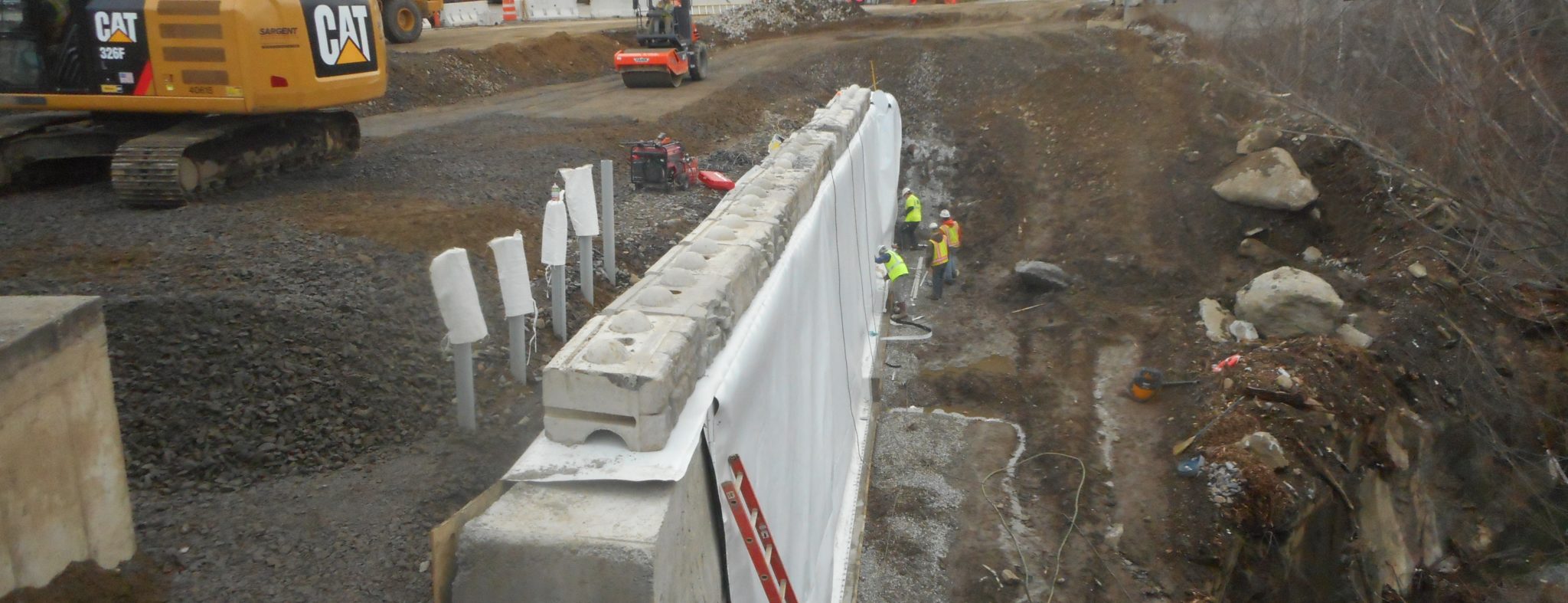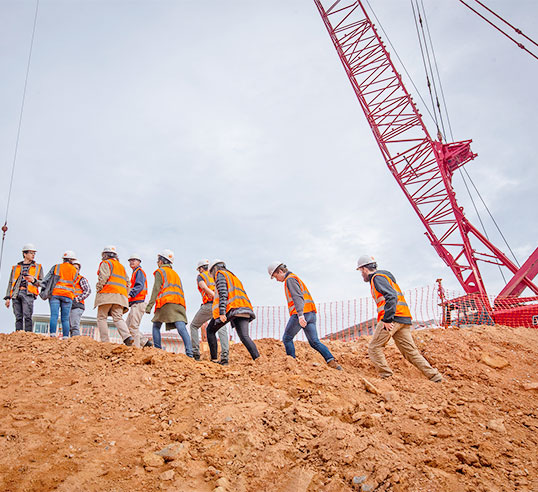Essential Skills for Flourishing in the Geotechnical Industry Today
Wiki Article
The Crucial Contributions of Geotechnical Engineers in Examining Dirt Actions and Foundation Design for Sustainable Framework Growth
Geotechnical designers offer as a foundation in the realm of lasting facilities advancement, where their knowledge in evaluating dirt habits directly affects the safety and security and durability of frameworks. By utilizing innovative methods such as Standard Penetration Tests and Cone Infiltration Testing, they meticulously review soil homes, leading to informed choices on foundation design.Function of Geotechnical Engineers

In enhancement to site investigations, geotechnical designers assess potential threats such as soil liquefaction, slope security, and groundwater issues. They use sophisticated engineering concepts to establish solutions that mitigate these risks, making certain that styles adhere to pertinent codes and requirements. Their job commonly includes cooperation with other design self-controls, architects, and ecological scientists to produce incorporated techniques to infrastructure growth.
Furthermore, geotechnical designers contribute to lasting practices by promoting the usage of materials and approaches that minimize ecological impact. With their comprehensive understanding of soil technicians and geology, they play an important duty in fostering risk-free, resistant, and sustainable facilities that fulfills the needs of culture while shielding the environment.
Dirt Behavior Analysis Strategies
Comprehending soil behavior is fundamental to informed decision-making in geotechnical engineering, as it straight influences the layout and construction procedures. Different evaluation methods are employed to review soil homes, making sure accurate predictions of its performance under different loading conditions.One primary method is the Typical Penetration Examination (SPT), which offers understandings right into soil thickness and uniformity via the resistance encountered throughout penetration. Cone Penetration Testing (CPT) provides a constant account of dirt stratification and in-situ toughness criteria, making it possible for an extra detailed understanding of subsurface problems.
Research laboratory examinations, such as Atterberg restrictions, unconfined compressive toughness, and triaxial examinations, are necessary for identifying dirt habits under controlled conditions. These examinations promote the resolution of essential criteria, consisting of shear compressibility, permeability, and toughness.

Foundation Design Principles
Foundation design principles are essential for making sure the stability and durability of structures, as they dictate how loads are transmitted from the superstructure to the underlying soil. These concepts incorporate various considerations, including load-bearing capacity, negotiation, and side security. A complete understanding of dirt auto mechanics is vital for geotechnical engineers to evaluate the communication in between the soil and the structure.One secret principle is the suitable selection of structure kind, which may consist of superficial foundations, such as spread footings, or deep structures, like caissons or stacks, depending on dirt problems and structural lots - civil consulting engineers. The structure should be designed to decrease differential negotiation, which can lead to architectural damages

Sustainable Infrastructure Practices
How can we efficiently incorporate sustainability into facilities methods? To accomplish this, it is necessary to embrace a holistic approach that stresses the partnership in between geotechnical engineering and ecological stewardship. Sustainable framework techniques start with thorough website evaluations, which examine soil behavior, local ecosystems, and resource schedule. By recognizing these aspects, this page engineers can establish layouts that lessen environmental impact while optimizing product use.Furthermore, using ingenious construction strategies, such as utilizing low-impact foundations and recycled products, substantially reduces the carbon impact of infrastructure tasks. Geotechnical engineers play a crucial function in selecting proper materials that improve sturdiness and sustainability, such as making use of geo-synthetics to enhance dirt stability and lower erosion.
In enhancement, lasting infrastructure practices require continuous tracking and upkeep to make sure that frameworks continue to be resistant over time. Inevitably, these practices not only contribute to the longevity of structures but also promote a healthier environment, aligning infrastructure development with broader sustainability objectives.
Study and Applications
Study in geotechnical engineering offer useful insights right into the useful applications of dirt actions and lasting infrastructure methods. One remarkable Web Site instance is the building of the Burj Khalifa in Dubai, where substantial dirt screening and evaluation were conducted to evaluate the unique challenges positioned by the region's loosened sand and high water table. Geotechnical engineers used advanced strategies such as vibrant probing and cone infiltration testing to establish the soil's load-bearing ability, ultimately causing the layout of a deep structure system that supports this renowned framework.An additional essential case is the removal of the San Francisco-Oakland Bay Bridge after the 1989 Loma Prieta earthquake. Geotechnical evaluations disclosed the requirement for dirt stabilization methods, including grouting and dirt nailing, to improve the seismic strength of the structure. These treatments not just boosted the bridge's safety and security yet also added to its long life and sustainability.
Such study exhibit exactly how geotechnical engineers play a vital function in recognizing soil actions and applying cutting-edge services to make sure see here now the architectural integrity and sustainability of facilities tasks. civil consulting engineers. Their experience is vital in dealing with the complicated tests posed by various soil conditions throughout varied geographic locations
Verdict
Finally, the contributions of geotechnical designers are crucial for the assessment of dirt habits and the design of foundations, which are crucial for sustainable framework growth. Through the application of innovative screening strategies and cutting-edge materials, these specialists make certain the security and safety and security of structures while decreasing environmental influences. The combination of sustainable methods advertises resilience in infrastructure tasks, highlighting the significance of collaboration among stakeholders to attain efficient building remedies that fulfill both ecological and social needs.Geotechnical designers offer as a keystone in the realm of lasting facilities growth, where their experience in analyzing soil actions directly influences the safety and durability of structures.Geotechnical designers play a vital role in the layout and building of facilities by analyzing soil and rock actions to make certain security and safety. A comprehensive understanding of dirt auto mechanics is crucial for geotechnical engineers to review the interaction between the foundation and the dirt.
Geotechnical assessments revealed the demand for dirt stabilization techniques, consisting of grouting and dirt nailing, to enhance the seismic resilience of the structure.In final thought, the contributions of geotechnical designers are crucial for the evaluation of soil actions and the style of foundations, which are crucial for lasting infrastructure development.
Report this wiki page